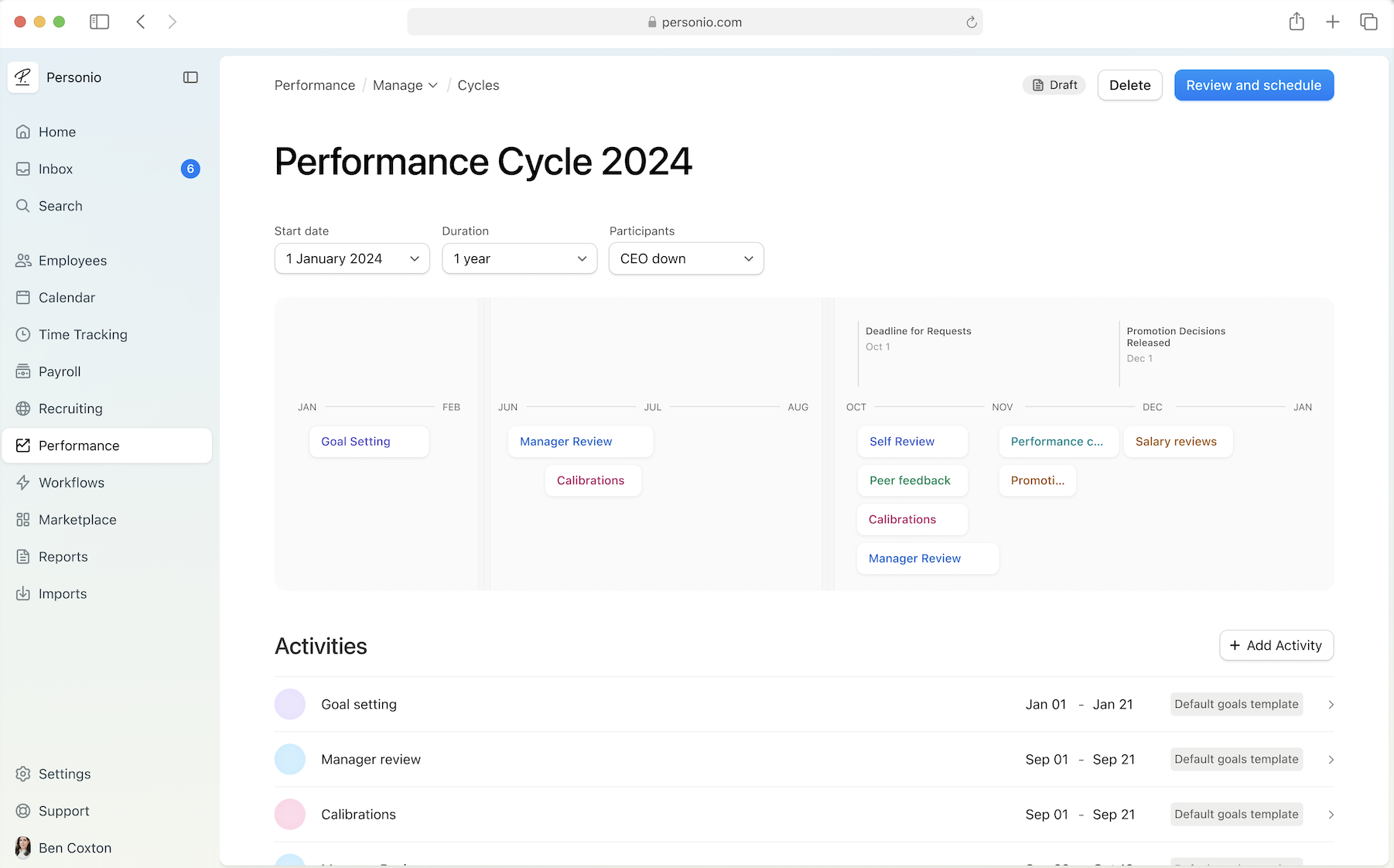
Centralise HR processes in a single platform
Create HR workflows and build better review cycles with Personio's intuitive performance management software
Find out more12 Ready-to-Use Performance Review Templates for Managers
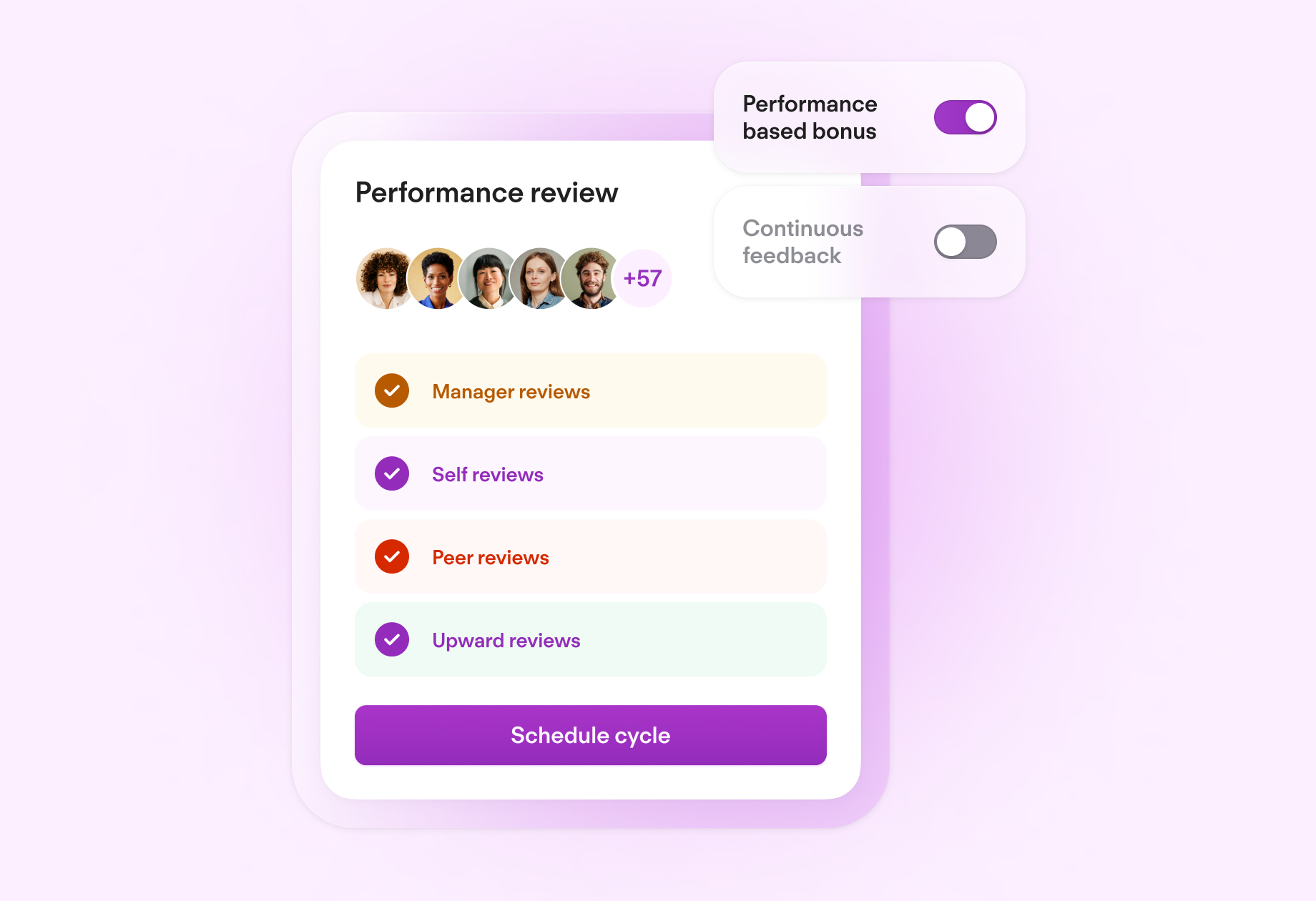
Performance reviews are essential for tracking performance, maintaining employee satisfaction and driving overall business success. So, why do so many organisations lack performance review templates that really get the job done?
In this article, we make the case for performance reviews while also offering 20 performance review templates that you can implement with ease today.
You can also download our more in-depth performance review template for free today.
Why use a performance review template?
A performance review template can be a helpful asset if your organisation is struggling with consistency come performance review season. The fact is that a template brings with it some very tangible benefits, including:
Streamlining the process by ensuring consistency
Introducing a level of fairness to performance processes
Enabling managers and leaders more easily to lead conversations
Saving time by introducing a scalable process
In this guide, we offer some best practices and templates your organisation can use to run more effective performance cycles.
Essential elements of performance review templates
Any great performance review template will have some combination of the following:
Employee information: Basic details like name, position and date of review.
Self-assessment: A section for the employee to reflect on their performance, strengths and areas for development.
Performance evaluation: This core section should assess core competencies and specific job duties using standardised rating scales.
Development planning: Forward-looking strategies outlining goals, training opportunities, and resources for the employee's continued growth.
Feedback or final notes: Sections for manager and employee feedback, pay reviews, along with (optional) signature lines for confirmation.
Additional elements found in performance review templates
Numeric scale evaluation - Where employees are rated on a numeric scale (e.g., 1-5) across various performance metrics like teamwork, communication and productivity.
360 degree reviews - Reviews are sourced not just from managers but also peers, subordinates and sometimes clients or customers.
Self assessments - Employees evaluate their own performance based on predetermined questions. These are often used in conjunction with manager evaluations.
Competency-based questions - Focused questions on skills and abilities (competencies) needed for a role, such as leadership, technical prowess, or problem-solving.
Management by objectives (MBO) - Employees and managers use the time during a review to set specific, measurable goals together.
Narrative or essay format questions - Managers have a section to write a detailed narrative discussing the employee’s strengths, weaknesses and areas for improvement.
Forced rankings - Employees are ranked against each other based on performance.
Checklist review - A checklist of statements or questions rated 'yes' or 'no' or on a scale (e.g., "Frequently takes initiative: Yes/No").
Balanced scorecard - Measures performance across categories that align with company objectives, such as financial results, customer satisfaction and internal processes.
Skills matrix - Lists specific skills required for a role and evaluates the employee’s proficiency in each.
Behaviourally anchored rating scales (BARS) - Uses behaviour "anchors" as reference points for rating an employee's performance in certain areas.
SWOT analysis - A review focused on identifying Strengths, Weaknesses, Opportunities, and Threats in an employee's performance.
Start, stop, continue - Identifies behaviours or actions that the employee should stop doing, start doing and continue doing.
Quarterly objectives and key results (OKRs) - Reviews focus on the Objectives and Key Results (OKRs) set at the beginning of the quarter.
Career development planning - This review incorporates a career progression framework into the performance evaluation, helping align individual aspirations with business goals.
Customer feedback review - Incorporates customer feedback into the employee's performance assessment.
Project-based reviews - Evaluation focuses on the performance of employees within the context of specific projects.
Peer reviews - Employees are evaluated by their peers on predefined criteria.
Skill or goal alignment - Assesses how well an employee's skills align with the organisation's goals or project objectives.
Best practices for crafting an effective performance review template
The first, most important point: Organisations needs to see performance reviews as mutually beneficial to them and their employees. The following best practices can ensure that is always the case:
Be intentional: Develop a template that makes sense for your organisation's size, goals, ambitions and future plans. Don't just take something and run with it, but choose a template that is well thought through and constructive.
Incorporate self-assessments: Getting an employee to rate their own performance is a great idea. It can help employees feel part of the process, and adds an element of reflectiveness that goes great with development planning.
Make feedback mandatory: Incorporating continuous or 360º feedback is only going to make your performance reviews stronger. Find ways to make it a mandatory part of the process and your template.
Don't overthink rating scales: Rating employees is important in terms of workforce planning, compensation and other factors. But, it's best to choose a simpler rating scale and clearly define what it means to be part of each segment for your workforce.
Last, but not least, try a pick-and-mix approach. Using the list below, take elements from any one of these templates to make the best performance review template for your team.
Streamline your employee development

Define performance cycles, set goals, give effective feedback and evaluate performance fairly. Put structure on how you grow and retain staff with powerful performance management.
Boost your performance12 performance review templates you can try today
Below, we’ve detailed 12 performance review templates, but we suggest you view them as components or tactics.
You can – and should – blend together the templates that make the most sense for your unique needs...
1. Personio’s performance review template
Best for: Any organisation that wants to up-level the way they conduct performance reviews (and still want to maintain a high level of customisation).
When to use this template: Annually or bi-annually
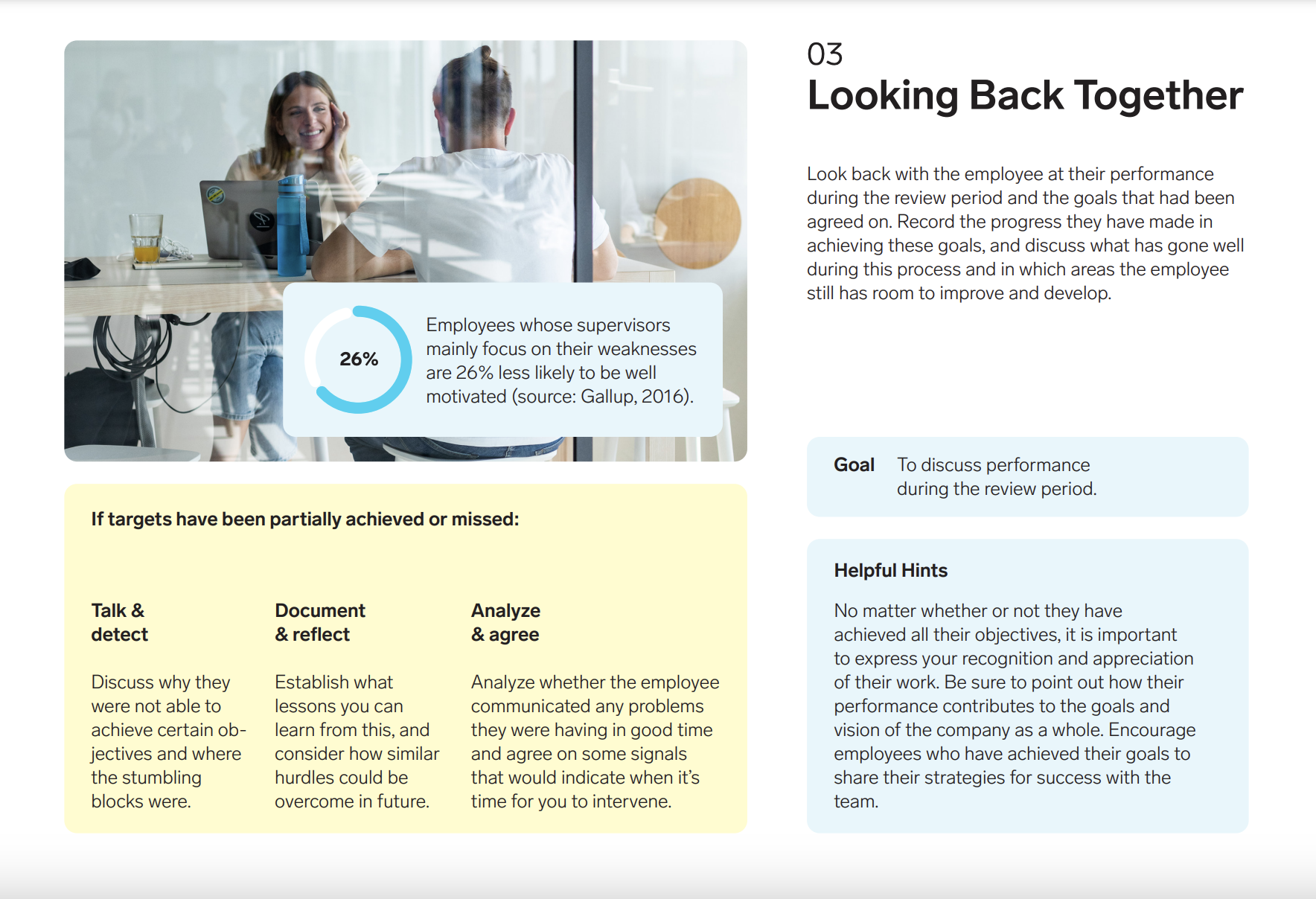
2. Personio's performance appraisal template
Best for: Organisations who want to invest a little bit more time to keep a continued check on the pulse of their employees. Fast-paced companies benefit most here.
When to use this template: Quarterly or monthly

3. Mid-year performance review
Best for: Organisations with fast-paced environments or roles with frequent changes in responsibilities.
When to use this template: Bi-annually (every six months)
Employee: [Employee Name] Date: [Date] Reviewer: [Manager Name]
Review Period: [Start Date] - [End Date]
I. Key Achievements:
List and briefly describe 2-3 significant accomplishments from the review period.
Quantify achievements whenever possible (e.g., increased sales by 10%).
II. Areas for Development:
Identify 1-2 areas where the employee can improve.
Be specific and provide actionable feedback.
III. Goals for the Next Review Period:
Set SMART goals (Specific, Measurable, Achievable, Relevant, Time-bound) for the next six months.
Ensure goals align with individual and team objectives.
IV. Feedback and Development:
Employee: Share your thoughts on your performance and areas for development.
Manager: Provide feedback on the employee's self-assessment and offer additional support resources.
V. Overall Performance:
Briefly summarise the employee's overall performance.
Acknowledge their strengths and areas for improvement.
4. Quarterly performance review
Best for: Organisations with dynamic projects or roles requiring ongoing performance adjustments.
When to use this template: Quarterly (every three months)
(Follow the same structure as the mid-year performance review template, adjusting the review period and number of achievements/goals accordingly.)
5. Annual performance review
Best for: Most organisations that value comprehensive yearly evaluations.
When to use this template: Annually
(Follow the same structure as the mid-year performance review template, adjusting the review period and considering including a broader overview of the employee's performance throughout the year.)
6. GOOD performance review template
Best for: Recognising and celebrating exceptional performance and contributions.
When to use this template: As needed
Employee: [Employee Name] Date: [Date] Reviewer: [Manager Name]
This review is intended to acknowledge and celebrate [Employee Name]'s outstanding performance during the review period.
Key Achievements:
List and elaborate on several noteworthy accomplishments that exceeded expectations.
Highlight the impact of the employee's contributions on the team, department or organisation.
Strengths:
Identify and describe the employee's key strengths and positive qualities.
Provide specific examples showcasing these strengths in action.
Overall:
Express sincere appreciation for the employee's dedication and hard work.
Briefly discuss any potential areas for further development (optional).
7. Employee self-evaluation template
Best for: Encouraging employee self-reflection and ownership of their development.
When to use this template: Before each performance review meeting (frequency varies)
Employee: [Employee Name] Date: [Date]
I. Achievements:
List and briefly describe your 2-3 most significant accomplishments during the review period.
Quantify achievements whenever possible.
II. Strengths and Areas for Development:
Identify your top 2-3 strengths and how they contribute to your work.
Identify 1-2 areas where you believe you can improve.
Be specific and propose concrete steps for development in these areas.
III. Goals for the Next Review Period:
Set SMART goals for your own professional development in the next review period.
IV. Feedback for Manager:
Share any feedback you have for your manager regarding your work, development, or the overall work environment.
8. 360 feedback template
When to use this template: As needed, often for leadership or high-impact roles
Best for: Gaining a comprehensive perspective on an employee's performance from various stakeholders.
Employee: [Employee Name] Date: [Date]
This review summarises feedback received from various sources, including:
Peers
Direct reports (if applicable)
Customers/clients (if applicable)
Manager
Feedback is categorised into the following areas:
Strengths
Areas for Development
Overall Performance
Key Themes:
Briefly summarise the common themes identified from the feedback.
Action Plan:
Based on the feedback, develop a plan with specific actions to address areas for improvement and leverage identified strengths.
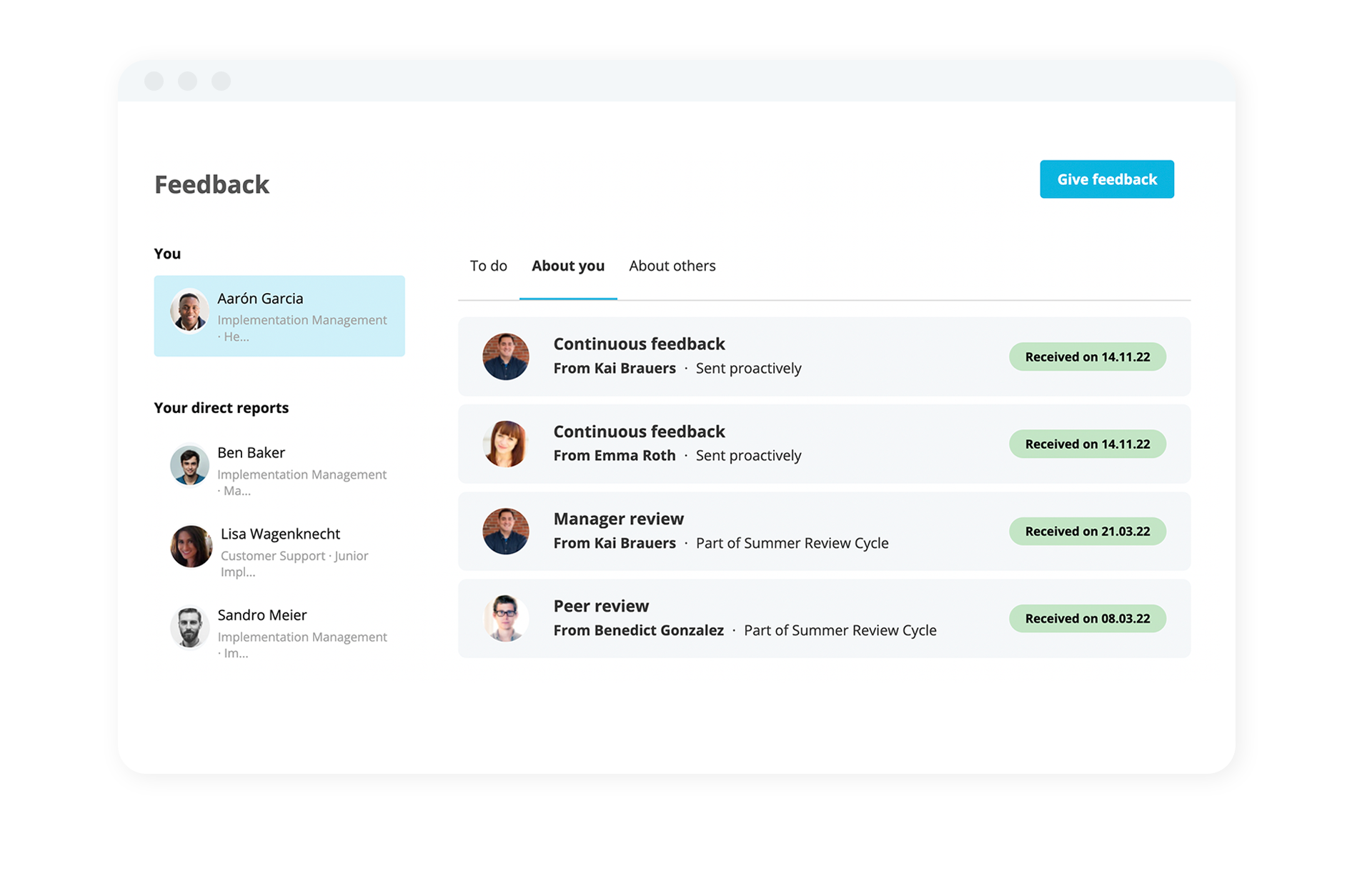
9. Numeric scale evaluation template
Best for: Organisations with established rating scales and a need for quantitative performance assessment.
When to use this template: When a standardised scoring system is required for specific roles or company policies.
Employee: [Employee Name] Date: [Date] Reviewer: [Manager Name]
Review Period: [Start Date] - [End Date]
Evaluation Criteria: (List the specific criteria being evaluated, e.g., communication, problem-solving, teamwork)
Rating Scale: (Define the rating scale with corresponding descriptions, e.g., 1 - Exceeds Expectations, 2 - Meets Expectations, 3 - Needs Improvement)
Evaluation Scores: (Provide individual scores for each evaluation criteria)
Overall Performance Score: (Calculate and record the overall score based on the established scoring system)
Comments:
Briefly explain the rationale behind the assigned scores and provide additional feedback.
10. Checklist review template
Best for: Roles with clear expectations and a need for frequent progress updates.
When to use this template: Regularly (can be weekly, bi-weekly, or monthly) for focused performance feedback
Employee: [Employee Name] Date: [Date] Reviewer: [Manager Name]
Review Period: [Start Date] - [End Date]
Performance Expectations: (Attach a list of specific tasks, responsibilities, or expectations for the review period)
Please check the appropriate box for each item:
Performance Expectations | Met Expectations | Partially Met Expectations | Did Not Meet Expectations |
|---|---|---|---|
... | [ ] | [ ] | [ ] |
... | [ ] | [ ] | [ ] |
... | [ ] | [ ] | [ ] |
Overall Performance: (Briefly summarise the overall assessment based on the checklist)
Comments: (Provide any additional feedback or context for the ratings)
11. Periodic check-in template
Best for: Fostering open communication and continuous feedback between managers and employees.
When to use this template: Regularly (usually weekly or bi-weekly) for informal performance conversations
Employee: [Employee Name] Date: [Date] Reviewer: [Manager Name]
Key Accomplishments:
Share any significant accomplishments or progress made since the last check-in.
Challenges and Obstacles:
Discuss any challenges or obstacles encountered and strategise solutions together.
Goals for the Next Check-In:
Set clear objectives for the next check-in period.
Feedback and Support:
Provide and receive feedback on performance and development.
Offer any necessary support or resources.
12. Skills/goal alignment template
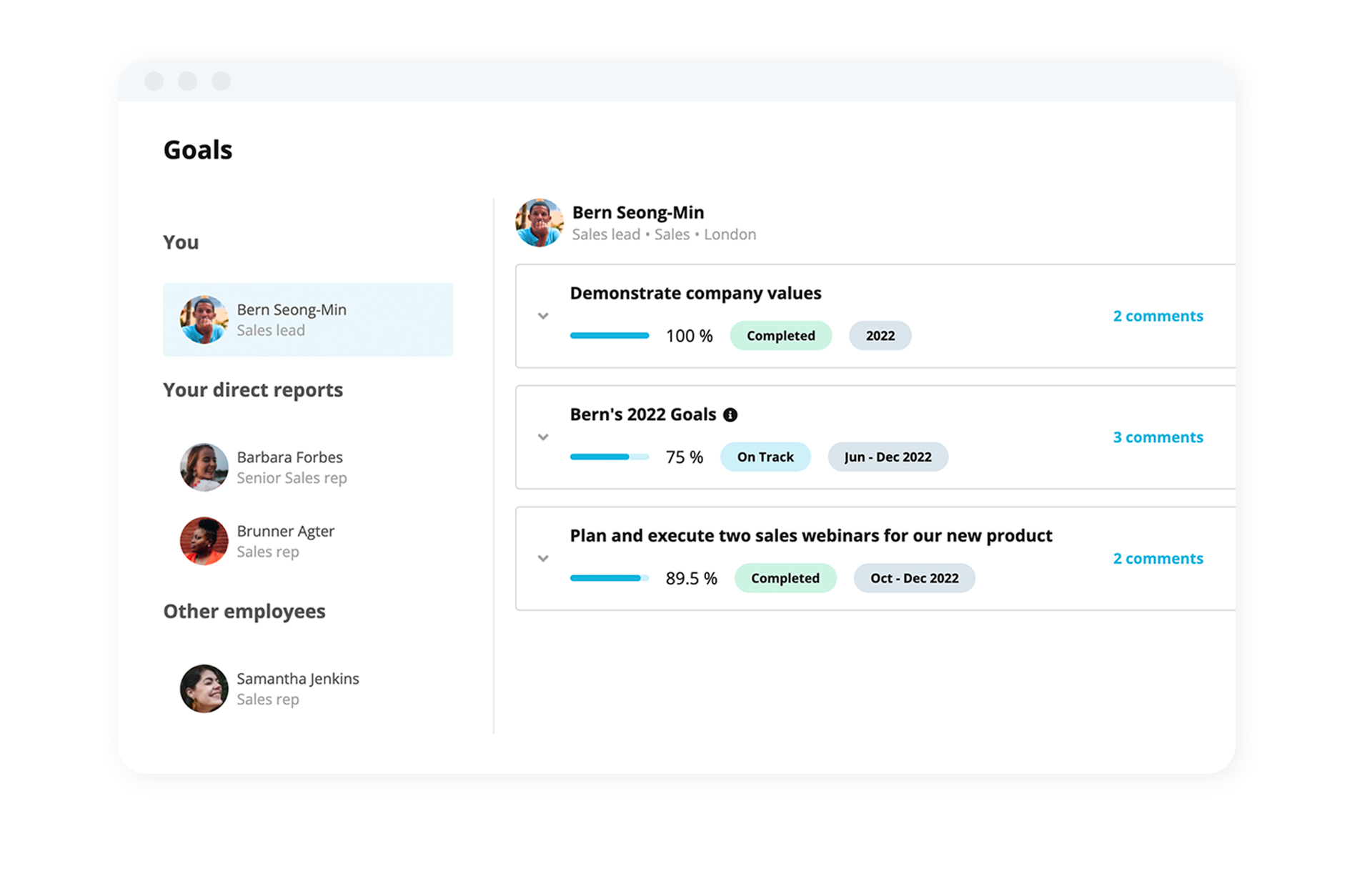
When to use this template: As needed, especially during goal setting discussions or career development planning
Best for: Aligning individual skills and development goals with organisational needs and strategic objectives.
Employee: [Employee Name] Date: [Date]
I. Employee Skills:
List your current key skills and strengths relevant to your role and career aspirations.
II. Career Goals:
Define your short-term (e.g., 1 year) and long-term (e.g., 3-5 years) career goals.
Be specific and detail the desired skills and knowledge needed to achieve these goals.
III. Organisational Needs:
Discuss the organisation's current and future needs, including strategic objectives and required skill sets.
IV. Alignment Analysis:
Analyse how your skills and goals align with the organisation's needs.
Identify any gaps or areas where your skills development can support achieving both individual and organisational goals.
V. Development Plan:
Based on the alignment analysis, create a development plan outlining:
Specific skills you need to acquire or enhance.
Learning resources and opportunities to bridge the identified gaps.
Timeline for achieving development goals.
VI. Ongoing Communication:
Schedule regular check-ins with your manager to monitor progress and discuss any adjustments to the development plan.
Give Potential Room To Grow With Personio
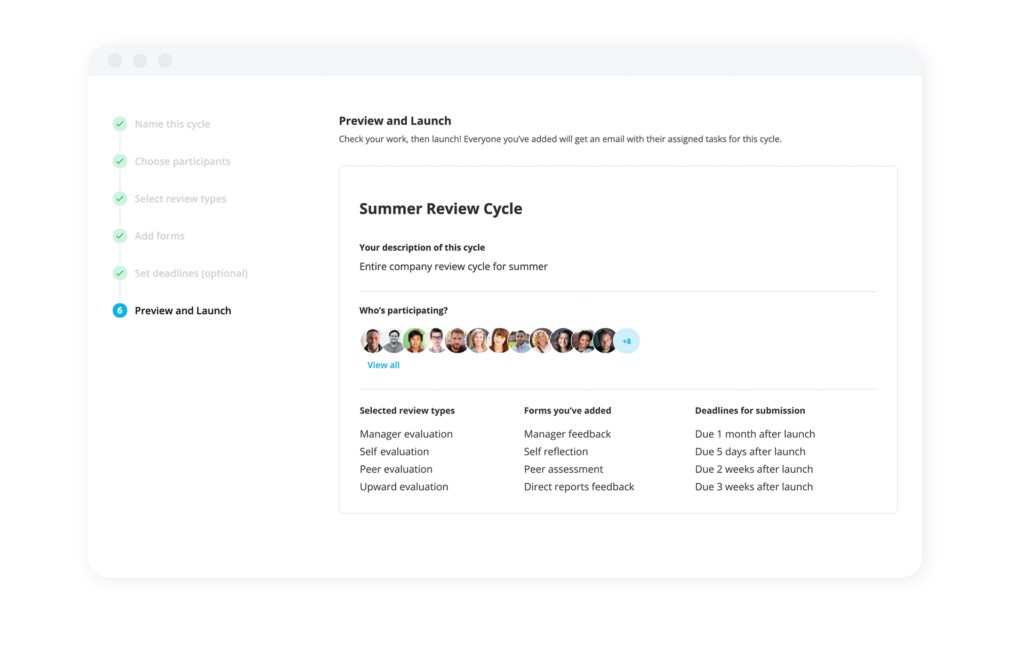
Automate your performance cycles to open up time for job enrichment with Personio today.
Find Out More
Running performance reviews with Personio
Personio’s all-in-one HR software solution allows busy teams to build automated performance management cycles at scale. This allows teams to build templates and processes that make sense for them and their work.
This includes evaluations, 360 and manager feedback and plenty of other opportunities to build programmes that make sense for your team. All HR has to do is build the cycle, add employees and click “run” to get things started.
Speak with an HR expert today to see how Personio can help. Or, download our performance review template for a deeper dive into the subject.
